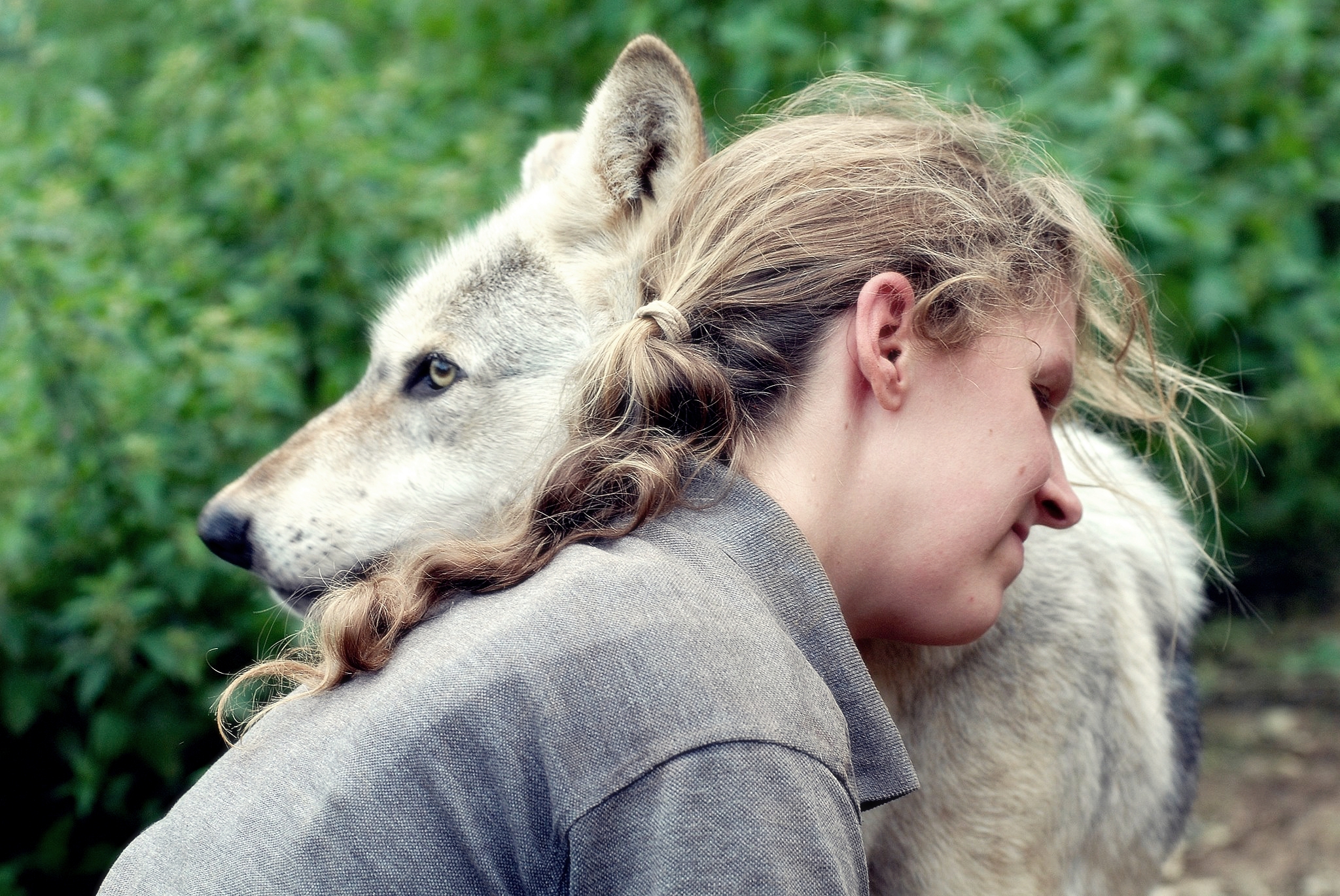Here is Part II of my two part interview series with the amazing and inspiring Dr Isla Fishburn (see part 1 here if you missed it!), where Isla reveals how her work with wolves has enhanced her understanding of dogs, how she has dealt with fear of criticism when integrating the worlds of holism and science, and the amazing world of plant healing and what it offers for our dog’s wellness.
How has your work with wolves informed your understanding of domestic dogs?
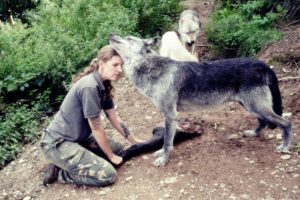
Great question!! And the answer, really, should be a book! Ha! Given that many of us have not had the opportunity that I had to work with a large group of captive wolves, it’s really easy to dismiss the need to research and observe these animals to support all we are trying to achieve for our dogs and their wellness.
….we have to remember that domestication is a process and not an event.
Sure, there are some things that dogs don’t show that wolves do and vice versa and domestication has played a part in that. Yet, we have to remember that domestication is a process and not an event. Domestication did not happen over night and it is also a relatively recent occurrence, when we consider the millions of years it takes for a species to evolve. This is why our domestic dogs are classed as a sub-species rather than a different species altogether. This is why a wolf and dog (of ANY breed), genetically speaking, can reproduce and create fertile offspring – because they have enough similarities in their biology to still allow for this.
In the work that I do I really focus on ecosystem health and conservation. So, from this perspective I am really focusing on observing and understanding the dog as an ancestral being – an animal that has an ancestral immune, digestive and nervous ecosystem. It’s the same with humans, too! There is nothing modern about us; it is just that we live in a modern day world, a world that can be detrimental to our own ancestral ecosystems because our bodies have simply not caught up with modernity. Looking at our dogs from this perspective allows us to see that, really, we are not all that different from any animal.
….we don’t have to have had experience with wild or captive wolves to understand more about dogs, but we do have to understand energy systems.
We are all made up of cells, we are all made up of a constellation of energy systems as well as physical systems and these energy systems are affected by what we see, hear, smell, taste, touch, feel and – for humans – what we also think. So, we don’t have to have had experience with wild or captive wolves to understand more about dogs, but we do have to understand energy systems.
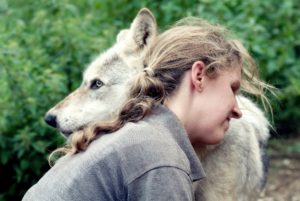
However, I think I am very privileged; I am very lucky to have observed and spent those three years with thirteen captive wolves and be able to apply this to our domestic dogs. From life stages at birth to communication, from self foraging to care, from conflict to peace, I have seen so many things that wolves do that I have seen in domestic dogs or where my experiences with the wolves has really helped me understand what a dog is doing.
There are so many lessons I learned not just about dogs but also about myself that I don’t quite know where to begin. I think what was really key for me is observing the fundamental way that our dogs really still rely on scent to communicate. I don’t just mean using their nose to seek and search, but how they can use scent in their communication as a social group animal, which our dogs still are. I mean the way that scent becomes so important to understand group dynamics, conflict and information about safety. This in itself taught me so much about group dynamics, functional character, safety and individuality. I learnt so much about co-operation, care and even correction. I saw how tolerant the wolves are even compared to the dogs and wolf-dogs that I had at the time.
I learned how soft, caring and connected they can be and how hostile, defensive and threatening they can be depending on group dynamics and population ecology and how this is still applicable in our dogs.
A few years later some papers have been written which also concluded that wolves are more tolerant towards group members than dogs and there are obvious reasons for this. I really found it fascinating observing how a wolf would correct a juvenile, an adult, a member of the group and how this can be applied to teaching our dogs. I learned how they communicated trust, reassurance and friendliness and how they used all parts of their physical body to do this – something that some breeds can’t do, which can sometimes cause communication issues. I learned about the importance of shape, the importance of rest, the importance of play. I learned about the delicate balance between care and correction, the use of appeasing behaviours and the fluidity of behaviours.
I learned how soft, caring and connected they can be and how hostile, defensive and threatening they can be depending on group dynamics and population ecology and how this is still applicable in our dogs. I learned how a male can supress another male or how a female can prevent another from having a season, and how this is relevant in our dogs.
I learned how these animals just want to be valued, understood and allowed to be the animal that they are and how this also applies to our dogs – the pressures, expectations, constraints and restrictions some dogs have placed on them EVERY SINGLE day is almost unbearable for me.
I learned SO much and there is not a day that goes by where I do not apply even a small part of what I learned from those wolves in either my professional or personal life.
I learned about them being non-judgemental, peaceful, humorous teachers and what they can teach us about ourselves, the lessons that they can show us and how dogs can do the same.
I learned SO much and there is not a day that goes by where I do not apply even a small part of what I learned from those wolves in either my professional or personal life.
As someone from a science background who embraces holistic practice, have you ever faced criticism or scepticism from your scientist peers and if so, how do you respond?
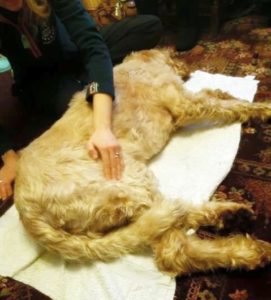
You know, this is such an important question. Several years ago it would have destroyed me, and it nearly did. I questioned myself, my talks, my teachings…everything. I was going to give up because I was SO different and because I care so much, it really affected me what people would say about me – that fear of being WRONG, of never being good enough!
I was going to give up because I was SO different and because I care so much, it really affected me what people would say about me – that fear of being WRONG, of never being good enough!
But now, because I too am on my own journey of discovery, of learning, I really see the world differently. If someone is critical I thank the universe for the lesson, because there is a lesson in there somewhere. If someone is critical, rather than taking that personally and questioning my ability I take a step back and ask “what has or is going on in that person’s life to respond the way they did.” There is always something going on to not make that person want to work as a collective. I love nothing more than celebrating other people’s successes – we should all be more open to doing that. Being happy for someone else makes you feel so good.
We are all on a journey and we are all trying to do our best. I don’t believe what I do is wrong but I don’t believe that what other people do is wrong either. We are just different. Yet, if we put all of our expertise together as a collective than that is the BEST way we are going to achieve complete wellness. There is more than one way to make a cake, build a fire, tell a story. I think for many, we are so conditioned in to fear – of not knowing enough, being enough, learning enough, that when new or alternative material is heard most people respond by protecting themselves because of that fear. So, then you hear “well that isn’t right because…” “I have never heard that before” or “what a load of nonsense.”
I was always allowed and persuaded to have a curious mind and I still do. That is why I love learning so much. So, when I hear something new I am like “Huh…I did not know that…tell me more.” I think it can be quite hard for many people to do this and, for many years it was for me. Being in academia seemed to dilute my curious mind and create a critical one instead. That is not healthy or helpful and I am really thankful that I have lost that in me now – but it takes time.
I think we have forgotten what science as a subject is all about – it’s about observation and asking questions about why, what, how.

I used to get so frustrated, sad, angry, demoralised and even embarrassed that after my PhD as I couldn’t get a post-doc but now I have learned that I have been able to do so much more, able to reach so many more people by being out in society! I think we have forgotten what science as a subject is all about – it’s about observation and asking questions about why, what, how. These days I see it more and more about competition, un-proving a paper that has just found evidence for something that another academic does not believe to be true. This just builds up, feeds on and rewards fear. This is not what science should be about and certainly should not be promoted in society. Sadly, it is, which is why I also focus on human wellness. I have been to some really dark places and I don’t want any other living being to have to go there. If they have or if they are I hope that I can be an example of how I survived and came out the other side full of hope and excitement.
What is one of the most exciting developments in the world of canine wellbeing that excites you the most?
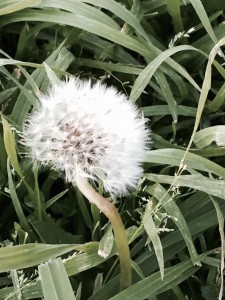
Ohhhhhh!! That is a tough one – there are so many!! I think it has to be energy medicine and spirit medicine. To be more specific, I am really passionate about plant spirit medicine and it is something that I am currently writing about. Both the scientist and the shaman in me means I have a love for bringing these two subjects together to maintain wellness. The conservation biologist in me means I love plants and, without them none of us would be alive.
I don’t think plants get the respect and notice that they deserve. They provide so much for life on earth, including medicine.
I don’t think plants get the respect and notice that they deserve. They provide so much for life on earth, including medicine. Plants are such fascinating beings that hold their own vibration, their own energy that can complement the energy system of a dog when it is in distress or when needing support. This is why I use plants to maintain health and wellness.
I like to explore subjects that are relatively new, controversial and only just beginning to be understood. I get bored if I am exploring something that is simply re-inventing the wheel. I like my mind to be challenged!! That is the curious side in me that wants to know more. If I read something, rather than saying “nahhhh…I don’t believe that” instead I say “this makes my head hurt, I need to learn it for myself and apply it if it is appropriate.” I drive my husband nuts! He says that he has never known anyone who only ever reads books to study and apply. I remember a while ago when I was in hospital. He asked me if I needed anything, you know, chocolate, juice, fruit? I told him to bring in my laptop and the book and papers that were in my study. I thought whilst I was in a hospital bed I could use that time by reading and studying!
I get bored if I am exploring something that is simply re-inventing the wheel. I like my mind to be challenged!!
Although the concept of plants having healing properties is not new – indigenous tribes have been working with plants for wellness for thousands of years – how we can bring this to our dogs is a new and exciting subject. Sure, there is plenty of evidence to explore and understand about the chemical composition of plants and their structure but I find it rather limiting and disrespectful by not also exploring the spiritual side of plants and the energy that they hold. I know people that are plant communicators and I aspire to be one – one day soon.
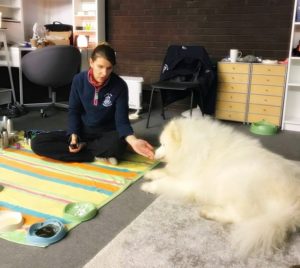
Plant medicine is used along many herbal therapists and holistic vets, but I use plant medicine in a different way to some. When I was studying my zoology degree, I came across a concept termed “Zoopharmacognosy,” which was coined by two scientists in 1993. This word translates to animal self-medication. It is the natural phenomenon where a wild animal will begin to forage on plant resources that are different to its usual diet range. Scientists have discovered that these wild animals show this behaviour (known as homeostatic behaviour) when their body is disturbed in some way, whether that may physical, emotional, hormonal, physiological etc. Domestic animals (including us) have the ability to do this too, for real! This therapy now has several names and I refer to it as Anima-Chi Phytotherapy, that is the name of the course I am writing. However, Caroline Ingraham trained me in Applied Zoopharmacognosy in the UK and I have developed how I work with plant resources from there. I love it because I know it works, I have seen it work on numerous occasions and have seen some spectacular successes with it! I encourage that everyone learns about this and the amazing world of plants for health for all of life. Mind. Blown!
What does a perfect day with your dogs look like?
Well, most people are going to hate me for saying this but each of my dogs have different needs so I walk them separately. I have ten dogs. Ha ha! NO, I am joking! I used to have six but we now have three. So, three hours of my morning are taken up with walking my dogs and I wouldn’t have it any other way!
…three hours of my morning are taken up with walking my dogs and I wouldn’t have it any other way!
I get up at 06:00 and Tunkasila is taken out first. Charlie stays in bed with her dad, my husband, before he starts work and Kola has a little siesta in the van (he can’t cope so well if both me and Tunkasila are out together. If Tunkasila is out with my husband then that is a different story, but Kola likes at least one of his females to be at home). Tunkasila and I go for a country walk – we see deer, hares, rabbits and “brother” buzzard most days. Tunkasila is reactive so I let her off in a secluded area on part of her walk. We welcome the new day with a little native prayer and then I take her home and walk Kola. We do a similar route but it is much calmer as Kola likes to plod. This is more of a stroll and opportunity to appreciate nature, my life, the area I live and what work I have planned for that day. When I get home with Kola I always do a chant to the four directions and a journey too, if there is time. My dogs always join me and there is nothing more special than having this sacred moment with your dogs.
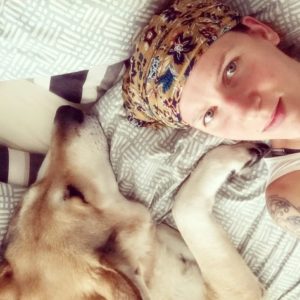
If I am at home that day then I love just being peaceful with my dogs whilst I am working on the laptop until it is “dinner” time. I love nothing more than putting time, care and love in to my dog’s food. Diet and health are a passion of mine.
When my husband comes home from work we both take Charlie out around a beautiful lake. It is a lovely area and quiet enough for Charlie. She is rather deaf now and blind in one eye so can get scared easily.
My evening is usually spent in my comfy pants, as I call them (you can eat LOTS when you are in your comfy pants) and I will either play with my dogs or do some energy healing on whoever asks to have some. My husband and I don’t get much time together so being at home on an evening with our canine family is pure love and contentment for me.
Knowing that my dogs are content, happy, loved and enjoy their life is fulfilment and I am lucky to have them as my family.
This concludes the interview series with Dr Isla Fishburn. I’d like to extend my sincere gratitude to Isla for taking the time to share her doggie wellness (and broader) wisdom with Doggiedom followers. If you’d like to find out more about Isla and her work, visit Kachina Canine (www.kachinacanine.com)
